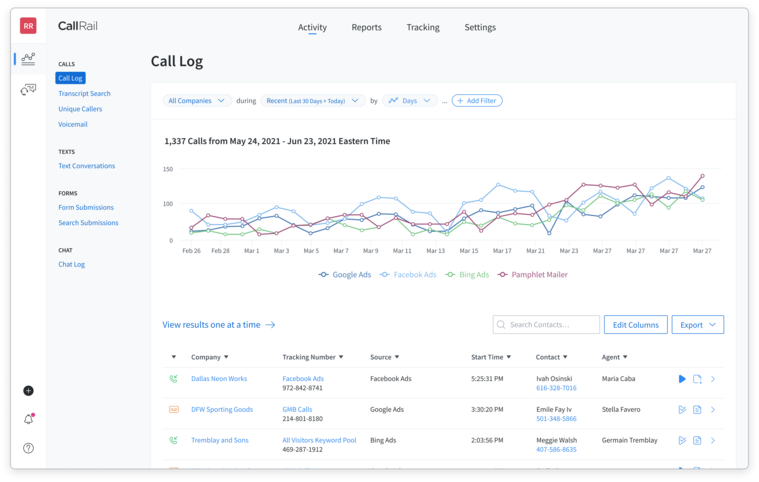Small businesses face unique challenges when it comes to advertising. With limited resources and fierce competition, it's crucial for them to find effective ways to promote their products or services. Advertising plays a pivotal role in creating brand awareness and reaching target customers, laying the foundation for a successful venture.
There are numerous advertising strategies that small businesses can implement to maximize their reach and generate leads. From local marketing techniques to digital channels, the key lies in understanding the target audience and choosing the right platform for promotion. By leveraging innovative tools and resources, small businesses can overcome their constraints and unlock their growth potential.
In today's fast-paced digital era, staying current with the latest trends and technologies is essential for small businesses to stay ahead of the curve. By adapting to the ever-changing landscape and constantly refining their advertising strategies, they can foster long-term success and drive sustainable growth in their respective industries.
Understanding advertising
Advertising is a powerful tool that plays a vital role in promoting a small business. It helps create brand awareness, generate leads, and ultimately drive sales and growth. By implementing effective advertising strategies, small businesses can reach their target audience and establish a strong market presence.
One key aspect of successful advertising is understanding the customer journey. This involves knowing when and where to engage potential customers, as well as tailoring your messaging to their needs and preferences. Creating a customer-centric approach can greatly improve the impact of your advertising campaigns.
There are various advertising channels to choose from, each with its own unique set of benefits and drawbacks. Examples include digital ads, like using Amazon Ads for increased visibility and traction, and traditional forms of advertising, such as print, radio, and television ads. It's essential to test different channels and methods to determine what works best for your unique business objectives.
An integral component of effective advertising is crafting a strong message that resonates with your audience. This includes having a clear call to action, like asking potential customers to sign up for a newsletter or visit a specific webpage. Further, it's important to be consistent in your branding and messaging to establish a cohesive identity across all advertising channels.
Another valuable strategy for small businesses is utilizing cold-email outreach to showcase your work, land clients, and boost profits. As illustrated by successful entrepreneurs, well-crafted cold-emails can help your business stand out and make lasting connections.
In short, understanding the principles of advertising is crucial for small businesses looking to make a mark in their respective industries. By focusing on customer needs, choosing the right channels, crafting compelling messages, and maintaining brand consistency, your advertising efforts are more likely to yield positive results.
Track your advertising performance and leads with CallRail

CallRail is a powerful tool for small businesses looking to optimize their advertising efforts. It offers Call Tracking, Conversation Intelligence, Form Tracking, and Lead Center that provide valuable insights into marketing campaigns. By tracking and managing phone leads, small businesses save time, money, and effort in understanding their campaign performance.
One of the key benefits of CallRail for small businesses is its ability to identify the most effective marketing channels. By setting up automatic website tracking or individual phone numbers for each marketing effort, businesses can analyze which sources generate the most leads and optimize their ad spend accordingly. This enables them to invest in campaigns with higher return on investment (ROI) and reduce ineffective advertising.
In addition to channel analysis, CallRail allows businesses to better understand their target audiences' behavior. The Conversation Intelligence feature provides insight into customer conversations, enabling businesses to identify trends and better serve their customers' needs. Moreover, the Form Tracking product simplifies lead capturing and management, allowing companies to focus on converting leads into customers.
Without a call tracking solution like CallRail, small businesses face multiple challenges in measuring marketing campaign performance. These challenges include difficulty in identifying which marketing efforts work best, lack of insight into customer behavior and preferences, and potential misallocation of advertising budget due to limited data on campaign success. Implementing CallRail or a similar solution is essential for overcoming these obstacles and driving marketing success.
Setting up CallRail or similar call tracking solutions before initiating any marketing activities is crucial for small businesses. This practice ensures accurate insights into advertising performance and allows companies to optimize their spending on effective marketing channels, tailor their offerings to meet customer preferences, and ultimately, achieve advertising success.
Small business and advertising
Why advertising is key for small businesses

Advertising plays a crucial role in the success of small businesses. It helps them stand out in a competitive market and reach their target audience. By creating awareness about their products or services, small businesses can attract new customers and maintain relationships with existing ones. This, in turn, leads to increased sales and business growth.
One of the benefits of advertising for small businesses is the ability to target specific demographics. By using Google Ads, businesses can reach potential customers who are actively searching for their products or services, driving sales, leads, and website traffic.
Brand recognition is another essential factor in a small business's success. Advertising consistently and using a unified brand image across various channels helps build a strong identity for a business, making it easily recognizable by potential customers.
Challenges in small business advertising
Small businesses often face challenges when it comes to advertising. One of the primary issues is the lack of resources and budget. Advertising can be expensive, and small businesses may struggle to allocate funds for marketing endeavors.
Another challenge is finding the right advertising platform. With the increasing number of advertising channels, it can be overwhelming for small business owners to select the most effective platform that caters to their needs and target audience.
Small businesses may also lack marketing expertise, leading to less effective advertising campaigns. This can result in adverse implications on their return on investment. For instance, an ineffective cold-email strategy might not generate the desired growth in company profits.
Lastly, staying up-to-date with the ever-evolving advertising landscape can be challenging. Small businesses need to stay informed about current advertising trends and modify their strategies accordingly to stay competitive in the market.
Despite these challenges, small businesses can overcome them with proper planning and dedication. By understanding the importance of advertising and investing wisely in marketing efforts, small businesses can achieve success and stand out in their respective industries.
Essentials of successful advertising
Creating engaging ad content
Crafting compelling ad content is crucial for a small business's advertising success. Focus on creating a clear message that highlights the value of your product or service. Use concise language and action words to make your message stand out. Additionally, incorporate visually appealing elements, such as images or graphics, to capture the audience's attention.
To ensure your message resonates with your target audience, consider these factors:
- Relevance: Tailor your message to the specific needs and interests of your audience.
- Simplicity: Avoid overwhelming your audience with too much information. Keep your ad message straightforward.
- Call-to-action: Encourage your audience to take immediate action, such as visiting your website or making a purchase.
Choosing the right advertising platforms
Selecting the appropriate advertising platforms for your small business is essential to reaching your target audience effectively. The right platforms will depend on your business objectives, target audience, and available budget. Here are some popular advertising platforms to consider:
- Social media: Platforms like Facebook, Instagram, and Twitter offer targeted advertising options to help you reach specific demographics.
- Search engines: Utilize Google Ads and Bing Ads to make your website more visible when people search for relevant products or services.
- Local advertising: Leverage local newspapers, radio stations, or community events to boost your regional presence.
When evaluating potential advertising platforms, consider the following:
- Cost: Determine your budget and compare the costs of various platforms to find one that suits your needs.
- Audience: Analyze your target audience's demographics and browsing habits to identify platforms where they are most likely to be reached.
- Competitiveness: Assess the level of competition on each platform and whether your ad can stand out among others.
Remember to regularly review and optimize your ad campaigns to maximize their effectiveness and achieve your desired results.
Budget management
Allocating advertising budget wisely
When managing your advertising budget for a small business, it's crucial to allocate funds strategically. Start by identifying your target audience and understanding their needs. This will help you determine the most effective marketing channels for reaching them, such as social media, search engine marketing, or traditional advertising mediums like print or radio. Break down your budget into different categories based on these channels, and allocate funds accordingly.
Additionally, prioritize marketing efforts that have a strong potential for long-term success. Invest in customer retention strategies like providing excellent customer service and building a recognizable brand image. Constantly review and adjust your advertising budget to reinvest in the most successful areas, allowing for improved results over time.
ROI on advertising expenses
Tracking the ROI on advertising expenses is essential for effective budget management. By measuring the performance of your marketing strategies, you can determine which campaigns are delivering the desired results and adjust your budget accordingly. Implement various tracking tools such as Google Analytics, conversion tracking, and customer feedback surveys to monitor the effectiveness of your advertising investments.
Keep a close eye on key performance indicators (KPIs) like conversion rates, cost per acquisition (CPA), and customer lifetime value (CLV). This will help you understand the true impact of your advertising efforts and make data-driven decisions about reallocating the budget to achieve better results.
For successful budget management in small business advertising, allocate budget wisely by identifying the most effective channels, prioritize long-term marketing efforts, and track ROI on advertising expenses to make informed decisions about your investments.
Online advertising strategies
Leveraging social media advertising
One effective approach to online advertising for small businesses is leveraging social media platforms. Social media advertising allows businesses to target their desired audience based on demographics, interests, and behaviors. This results in increased brand awareness and customer engagement.
To maximize the impact of social media advertising:
- Identify the platform that best aligns with your target audience and business goals
- Craft engaging content that resonates with your audience
- Monitor and analyze performance data to optimize campaigns using tools like CallRail or Google Analytics.
Search engine advertising
Another powerful online advertising strategy for small businesses is search engine advertising. Search engine advertising enables businesses to promote their products and services by bidding on keywords related to their offering. This ensures that their ads appear at the top of search results for the targeted keywords, increasing visibility and attracting potential customers.
To excel in search engine advertising:
- Research relevant keywords with high search volume and low competition
- Write compelling ad copy that entices users to click
- Optimize landing pages for increased conversion rates
- Track your campaign results and use the data to improve your ads with CallRail
By implementing these social media and search engine advertising strategies, small businesses can effectively promote their products and services to their target audience, driving growth and success.
Offline advertising strategies
Print media advertising
Print media advertising remains a valuable marketing tool for small businesses. It includes various formats such as newspapers, magazines, and direct mail. Newspapers provide a diverse audience and can target local customers. Magazines offer opportunities to showcase high-quality visuals and reach niche markets. Direct mail, such as postcards and brochures, allows businesses to communicate directly with potential customers.
To make the most of print advertising, focus on:
- Ad design: Ensure your visuals and messaging are eye-catching and convey your brand identity.
- Targeting: Choose publications that cater to your target audience, and consider segmenting your mailing list for personalized direct-mail campaigns.
- Tracking results: Use CallRail to know what marketing efforts are making your phone ring.
Out-of-home advertising
Out-of-home (OOH) advertising includes billboards, transit ads, street furniture, and other forms of advertising located in public spaces. This form of advertising helps small businesses increase brand visibility and reach potential customers as they go about their daily routines.
Key aspects to consider for successful OOH campaigns:
- Location: Place ads in high-traffic areas to maximize exposure, such as busy streets or popular transit hubs.
- Creative visuals: Use bold designs and concise messaging to capture attention and make a strong impression.
- Timing: Coordinate your campaign with local events or seasonal trends to boost relevance and engagement.
- Tracking results: Again, use call tracking software like CallRail, to test the effectiveness of new campaigns.
By implementing these offline advertising strategies, small businesses can effectively complement their online presence and maximize their overall marketing efforts.
Tracking advertising performance
Measuring the success of advertising efforts is crucial for small businesses to optimize their marketing strategies. One efficient method to track advertising performance is by implementing website analytics. This approach helps you monitor the traffic driven to your website from various campaigns and determine their conversion rates.
Another essential metric to consider is the Customer Acquisition Cost (CAC). CAC allows companies to understand the amount spent to acquire new customers. Comparing CAC to Customer Lifetime Value (CLV) can help businesses assess the long-term potential of their marketing efforts.
It is also significant to evaluate the Return on Investment (ROI) of advertising campaigns. ROI measures the revenue generated through marketing activities as a percentage of the total cost. A higher ROI indicates that the marketing efforts are profitable and effective.
Furthermore, small businesses should take advantage of key performance indicators (KPIs) tailored to their unique needs. Specific KPIs may vary depending on the industry, target audience, and marketing goals. Examples of common KPIs include click-through rates, conversion rates, and social media engagement.
Lastly, it's essential to monitor data from marketing campaigns to optimize future strategies. By analyzing the performance of past campaigns, companies can develop more effective budgets and identify areas of improvement.
By leveraging these methods to track advertising performance, small businesses can make data-driven decisions that contribute to their growth and success.
Future of small business advertising
The future of small business advertising is transforming rapidly, embracing new technologies and strategies that cater to the ever-evolving consumer landscape. As digital channels continue to dominate, small businesses must adapt their advertising strategies to stay ahead of the curve.
In the world of online advertising, personalized marketing approaches are becoming increasingly important. By creating buyer personas, small businesses can better understand their customers and tailor their messaging to resonate with their target audience. This method allows for more meaningful connections and deeper engagement.
One trend that will reshape small business advertising is the growing reliance on automated marketing initiatives. As forecasted for 2022, automation tools will provide businesses with more efficient ways to manage their advertising campaigns. From automated email marketing to social media scheduling, these tools will help streamline operations and maximize returns on investments.
Another key shift in the advertising landscape is the rise of experiential marketing, which focuses on providing consumers with immersive experiences that forge strong emotional connections to a brand. This method will incorporate the use of technologies, such as augmented reality and virtual reality, granting small businesses innovative ways to engage with their audience.
Lastly, the continued growth of social media platforms will see small businesses explore new, dynamically engaging channels on which to advertise. Emphasizing authentic connections and creative content, advertising on social media will become more crucial for small businesses looking to capture the attention of increasingly tech-savvy consumers.
Overall, the future of small business advertising will involve the seamless integration of technology, innovation, and a deep understanding of the consumer. As the advertising arena evolves, small businesses must adapt effectively to stay competitive and ensure that their messages are reaching the right audience.
Conclusion
In the constantly evolving world of advertising, small businesses need to stay competitive and make the most of the resources at their disposal. One effective way to do this is by utilizing innovative solutions like CallRail, which provides a range of tools designed to help businesses grow their reach and influence their target audience.
CallRail allows small businesses to unlock the power of data in their advertising strategies. By offering a clear understanding of which marketing efforts are working best, businesses can optimize their campaigns to achieve maximum results. The platform's user-friendly features, such as call tracking and analytics, empower businesses to make confident, data-driven decisions.
As small business owners navigate the challenges of marketing and advertising, embracing cutting-edge tools like CallRail can make a noticeable difference. Not only does the platform provide valuable insights, but it also supports businesses in making more targeted and effective advertising choices. To experience the benefits of CallRail firsthand, small business owners can take advantage of their 14-day free trial and discover how this software can help drive success in their advertising endeavors.








